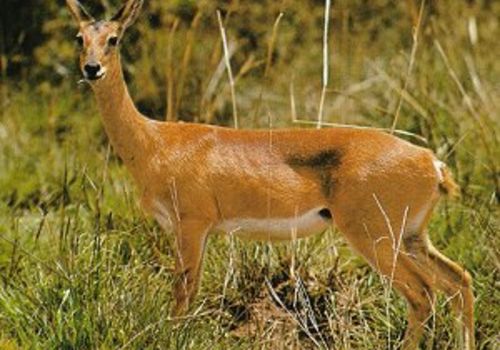
Oribi
Ourebia ourebiOribi
Introduction: Oribi (Ourebia ourebi) are very rare in Namibia where they inhabit grasslands, floodplains or lighter wetlands. They are a small antelope with a long neck and limbs with distinctive short and erect horns. They rest and take protection from predators in long grass. Oribi are the fastest of the small antelopes and when in danger or disturbed, they flee with a 'rocking-horse' run.
Oribi are a vulnerable species, not entirely due to a patchy and discontinuous distribution pattern, but because they are regularly poached, particularly at night when caught in the glare of headlights. They are killed by hunting dogs and also get entangled along farm fences.
Distribution: Oribi occur in the Eastern Zambezi Region (formerly the Caprivi Strip).
Diet: A grazer and selective browser. Eats forbs and specific parts of plants, varying to location.
Colouring: The upper parts of the body are a reddish-brown colour with white underparts. The black tail is a stark contrast to the white rump.
Breeding: Single young are born after a gestation period of 210 days. The young hide and are visited by the returning female to suckle until they are weaned at about 4-5 months.
Size: An adult male stands about 0.6m at the shoulder. Weight: 14kg. The female is slightly larger than the male. Only the male has horns which are between 80-180mm long.
Klein Windhoek

